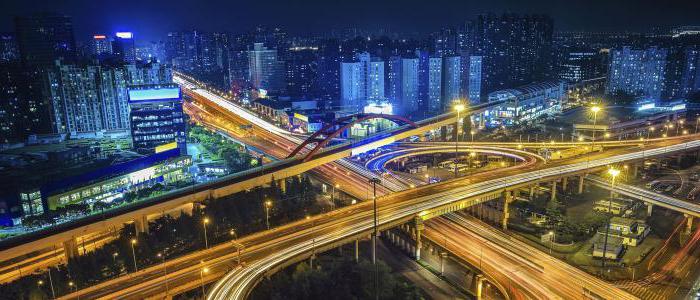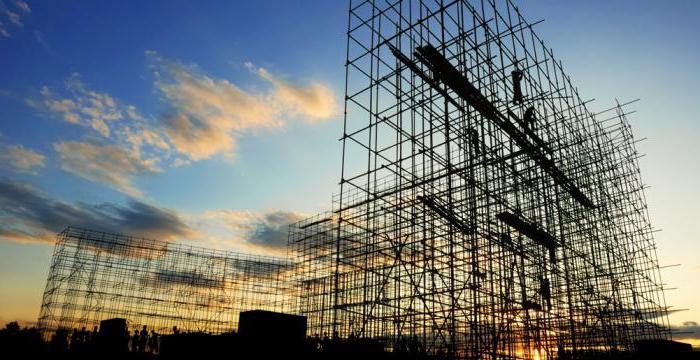Infrastructure is a combination of fundamental structures and systems that serve a country, city or district, including those necessary for the functioning of the national economy. This usually includes such objects as roads, bridges, tunnels, dams, sewers, electrical networks, telecommunications. These are the physical components of interconnected systems that provide society with the goods and services necessary to maintain and improve the living conditions of the population.

Historical information
According to the Online Etymology Dictionary, infrastructure is a term that has been used in English literature since 1887, and in France since 1875. Initially, it meant the entire set of structures that form the basis of any operation or system. The term came from French. The word itself originally meant a primer, that is, material under asphalt or rail. If we turn to Latin, then the prefix "infra" means "under."
In a military sense, the term began to be used in the United States after the establishment of NATO in 1940. Then he began to appear in the works of urban planners in the 1970s. However, the creation of infrastructure as a problem attracted attention only after America in Ruins. This work has generated discussions that continue to this day. As it turned out, infrastructure is an important factor in success or failure. However, there is still no single definition of the term. To clarify the situation, the US National Research Council introduced the concept of "infrastructure of public buildings." It is quite extensive and describes in detail its elements.
In Keynesianism, infrastructure is solely public assets that facilitate production. Now the term is at the peak of popularity. However, this leads to its increasing universalization. Some researchers consider any technological system and business organization to be an infrastructure.

In economics
Social infrastructure can be owned and controlled by the state or private organizations, for example, housing and communal services or railway companies. Most facilities are usually public. These include roads, main ports, water utilities and sewers. However, most energy networks and telecommunications are controlled by private companies. Ensuring infrastructure is the state’s task. It is funded by taxpayers. Private companies most often charge for the use of their property. In the United States, infrastructure spending accounts for 3.6% of GDP since 1950. It is funded not only by the state, but also by various private companies. Many financial institutions invest in infrastructure development, in particular the European Bank for Reconstruction and Development.

Development Impact
Investing in infrastructure is an important part of capital formation. Its volume and effectiveness are reflected in all socio-economic indicators of welfare. The relationship between infrastructure and the development of the national economy is still a matter of debate in the scientific community. As practice shows, the return on investment in buildings in the OECD member countries is quite low. However, a completely different effect is observed in developing countries.However, you need to understand that, for example, transport infrastructure has not only direct, but also indirect advantages for business. European and Asian researchers argue that the existence of railways is an important indicator that predicts economic growth in a country.
Soft infrastructure
This term summarizes all the institutions that are necessary to maintain living standards in the economy, healthcare, culture and the social sphere. The “soft” infrastructure includes the financial system, education, government, law enforcement and emergency services. This includes not only physical assets such as special buildings and equipment, but also the rules that govern the operation of these systems. In addition, the “soft” infrastructure includes organizations in which highly qualified personnel are trained. Its task is to provide services to people. The information infrastructure, which we will dwell on further, is basic. With the development of the Internet and telecommunications, the functioning of the entire economy depends on it.

Social infrastructure
- Health care system. This includes not only hospitals themselves, but also their financing system, health insurance, education of future doctors, public monitoring of the quality of services provided and coordination during emergencies, such as epidemics.
- Educational and research systems, including schools, universities, colleges and other institutions. This includes the features of the process of financing and accreditation.
- Social Security Systems. Not only government support is important, but also the activities of private charitable foundations.
Hard system
This term summarizes all the networks necessary for the functioning of national industry. Transport infrastructure is only one of the components. This includes all buildings, factories, equipment, which are important elements of the overall process. In addition to the transport, energy, water and communication infrastructure is allocated within the framework of a “rigid” system. Its main characteristics are as follows:
- The presence of capital assets that provide services.
- Large networks.
- Historicity and interdependence.
- Natural monopoly.
Information infrastructure
If earlier, when we talked about resources, metal ores and coal immediately appeared before our eyes, now the situation has changed significantly. For the first time, researchers started talking about information infrastructure in the late 1990s. Today it includes the Internet and all kinds of social networks, that is, everything that provides access to certain news and data. This is so important, as information has become the most important resource on which success in any industry depends.

Use of the term
This concept is used not only by economists, but also by a number of other specialists, among which:
- Engineers and builders. In their understanding, infrastructure is first and foremost tangible assets, which are part of the whole network.
- Researchers in the field of civil defense and economic development. They distinguish between “hard” and “soft” infrastructure.
- Military. They use this term to refer to all buildings or permanent structures necessary to support the army. Therefore, it can include both headquarters and barracks.
Today, the term "infrastructure" is increasingly used not only in scientific works, but also in everyday life. It can be heard on the street and from the stands from the lips of famous politicians. Therefore, it is so important to understand its meaning and put this knowledge into practice.







